Science of kickflip
It's a matter of flipping your board once and landing on it. As simple as it sounds, we all know how tough it can be.
Let's break down the mechanics of this trick scientifically. I will not say, "jump as high as possible and flick out your front foot hard."
In this series, we will analyze the science and physics behind kickflips according to theory and objective facts.
Summary
Flick fast and compact, not forcefully.
You don't need to flick so hard since human legs are strong enough to generate enough energy to flip a skateboard. Overflicking(flicking too hard) can cause a bigger problem; you may lose balance or your front foot may go too far from your board that you can't bring it back when landing.
Keep your flick quick and compact. If your board sticks to your front foot, you might be flicking too hard.
For your more details about overflick, click here.
Pop straight down. Snap, not push.
Understanding the difference between the functions of your thighs' and calves' is essential. Use your thighs to lift your body first. Then use your calves to pop the tail.
Focusing too much on popping the tail might lead to overpop, giving your nose too much energy to rise, making it harder to flick out your front foot. Keeping the pop compact helps you flick out your front foot more easily.
For more details about overpop, click here.
Shift your weight on the heel side before popping.
Your board goes to your heel side as your front foot flicks it diagonally off to the heel side. It is essential to stay above your board by shifting your weight on the heel side before jumping up. Doing so allows you to stay on your board and to flick straight forward.
For your more details about weight distribution, click here.
Simulation
Hit the icon to initiate 3d simulation.
Tips
Kickflip consists of principal components: pop, flick, weight distribution, etc. Understanding the objective science behind it is essential, as focusing on seemingly eye-catching factors as flicking may lead to a pitfall. For example, when you want to flip your board faster, you may think you should flick your front foot harder. But is that so, according to science?
Your very effort could be why your board is not flipping fast enough. By overpopping, your board's nose might have too much energy to rise. Overflicking could be causing too much friction between the nose and your front foot. Let's analyze what's really happening based on science and physics.
Why Your Front Foot Drops in Kickflip
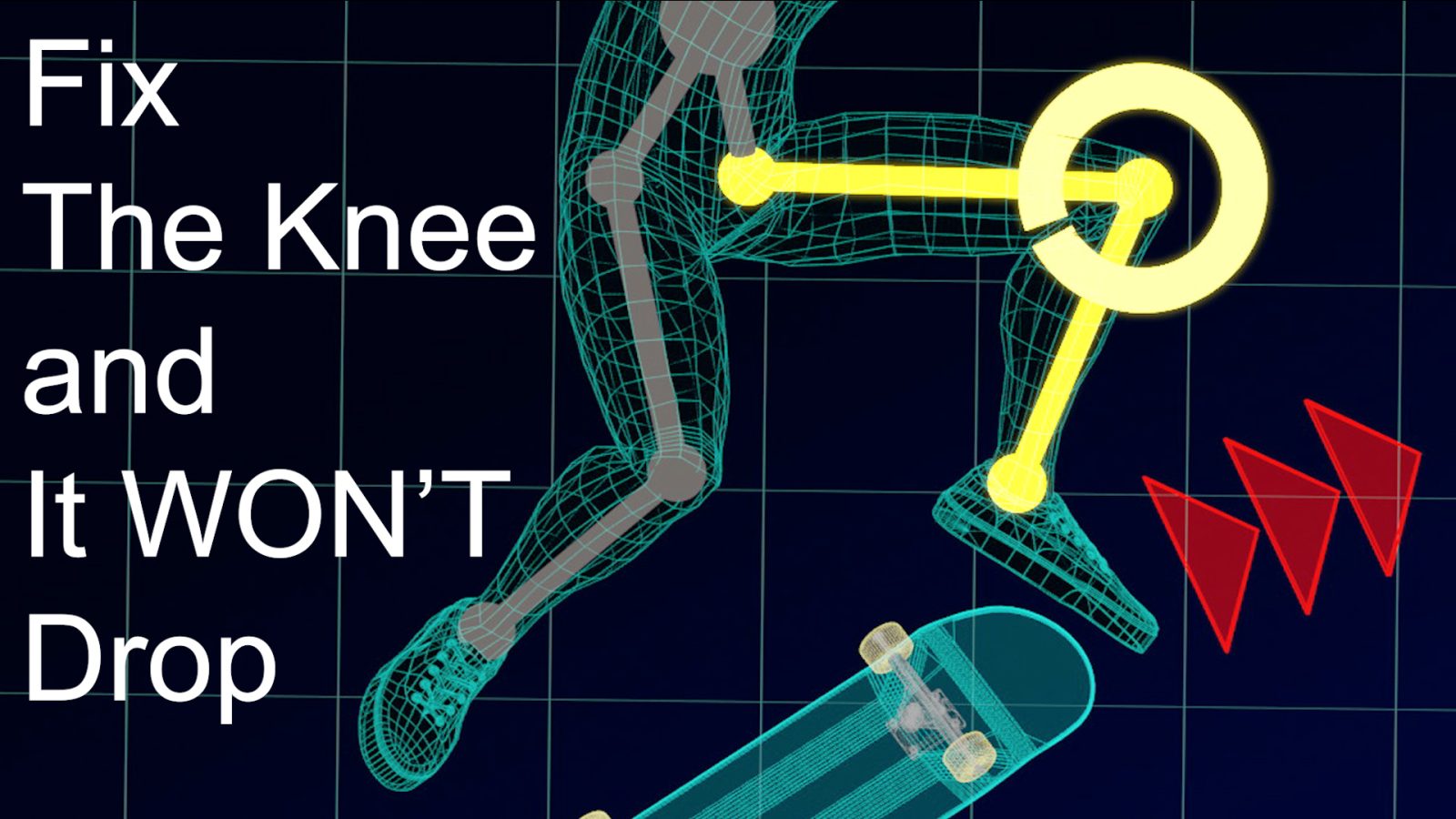
If you actually were flicking down, it is obvious that your front foot reaches the ground first by flicking down. But you are not, are you? You are flicking more forward. The strange thing is, even though you are consciously flicking forward, you somehow can't keep your front foot above the board. In fact, under certain conditions, even if you flick forward, the front foot can still be forced downward.
Does Flicking Upward REALLY Flip the Board? The Science of Kickflip 2025

"Flick your front foot diagonally upward." A lot of tutorials say that. But even if you do so as hard as possible, the board doesn't flip. Be honest. Really. If the board rises toward you, don't you think it would be easier to flip it by applying force diagonally downward? So why do so many people have to use the phrase "flick upward?" It's not that they are lying. It's just that the phrase "flick your front foot diagonally upward" fails to explain a crucial point.
How to Kickflip - LOGIC, PHYSICS, and PHYSIOLOGY
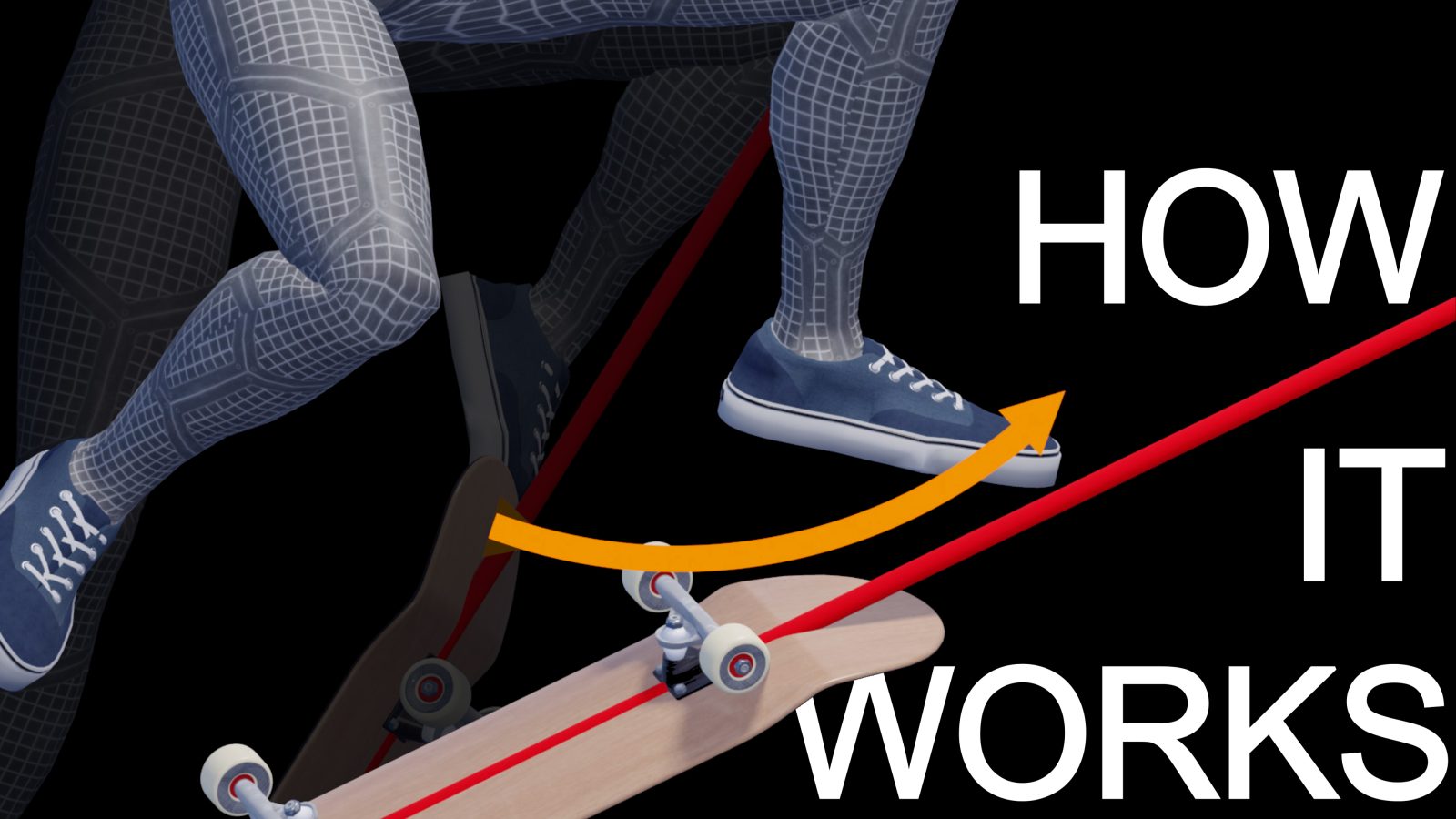
Intuitively, it seems you can effectively flip the board by applying a downward force to it as it comes up toward you, but your front foot will reach the ground first by doing so.
They use various expressions to solve this problem, such as "Don't flick down and flick upward." However, many people struggle with this trick, as their boards stick to their feet no matter how strongly they flick out their front feet.
I can assure you that a Kickflip is NOT about strength. What you should be doing, instead of forcing your front foot to give it a flick, is to direct your flick in the right direction by opening your front knee. Then, you can flip your board with the tiniest force.
In this article, we will analyze the motion of a Kickflip physically and physiologically to reveal the secrets to flipping the board effectively. Don't worry—you will get your Kickflip.
Why does a kickflip stick to the front foot?
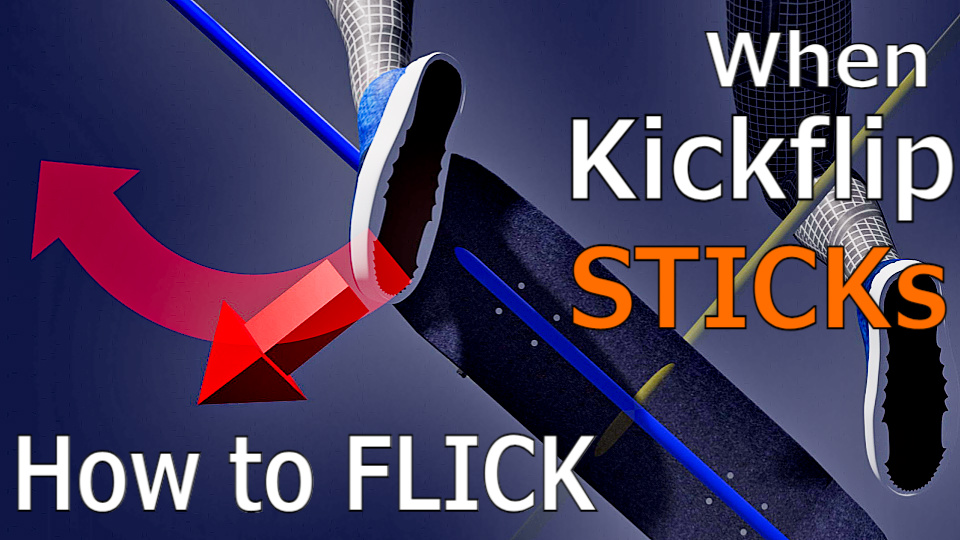
Why does my Kickflip stick to the front foot?
Because your flick's energy is parallel to the spinning axis.
You flick your board as hard as possible, but it sticks to your front foot and wouldn't flip while you can flip your board with your finger. This time, let's break down this "sticking problem."
Weight distribution of kickflip and how to land it

What's the secret behind kickflip weight distribution?
Shift your weight on the heel side before popping, and your board will slip under you naturally.
Learn proper weight distribution to land back on your deck. Let's go back to school and talk about some essential physics.
Trouble Shooting
Kickflips always come with troubles. Your board may spin horizontally too much, you may have hard time landing back on it, etc. Let's see why those problems can happen scientifically.
Why Your Front Foot Drops in Kickflip

If you actually were flicking down, it is obvious that your front foot reaches the ground first by flicking down. But you are not, are you? You are flicking more forward. The strange thing is, even though you are consciously flicking forward, you somehow can't keep your front foot above the board. In fact, under certain conditions, even if you flick forward, the front foot can still be forced downward.
Why does a kickflip stick to the front foot?

Why does my Kickflip stick to the front foot?
Because your flick's energy is parallel to the spinning axis.
You flick your board as hard as possible, but it sticks to your front foot and wouldn't flip while you can flip your board with your finger. This time, let's break down this "sticking problem."
Why does your kickflip spin backside? And how to avoid it
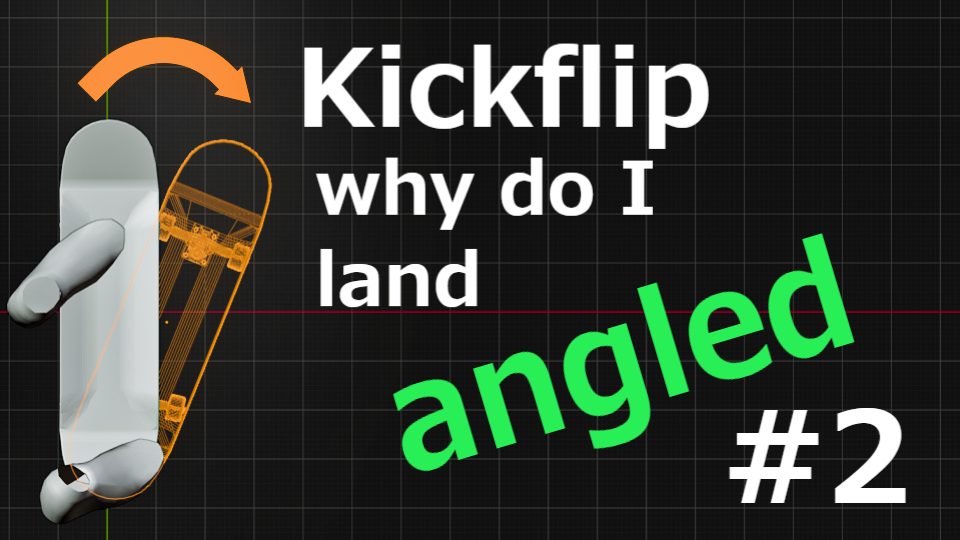
Why else causes my board to spin?
Too much pop and flick may do.
Why does the kickflip spin backside? In the previous video, we classified the spinning problem's symptoms and elements that could cause the spin.
This time, we'll discuss how flicking or popping too hard affects the issue.
Why does the kickflip spin backside?

Why does my board spin?
NOT because of foot placement or shoulder angle.
You are reading an right article if this is what you have in your mind:
"Why does my board spin backside? And don’t tell me I’m scooping my back foot. I know the difference between popping and scooping. It seems like I should not put my backfoot in the pocket and I should not open my sholders, but are they really the reasons? If so, WHY??"
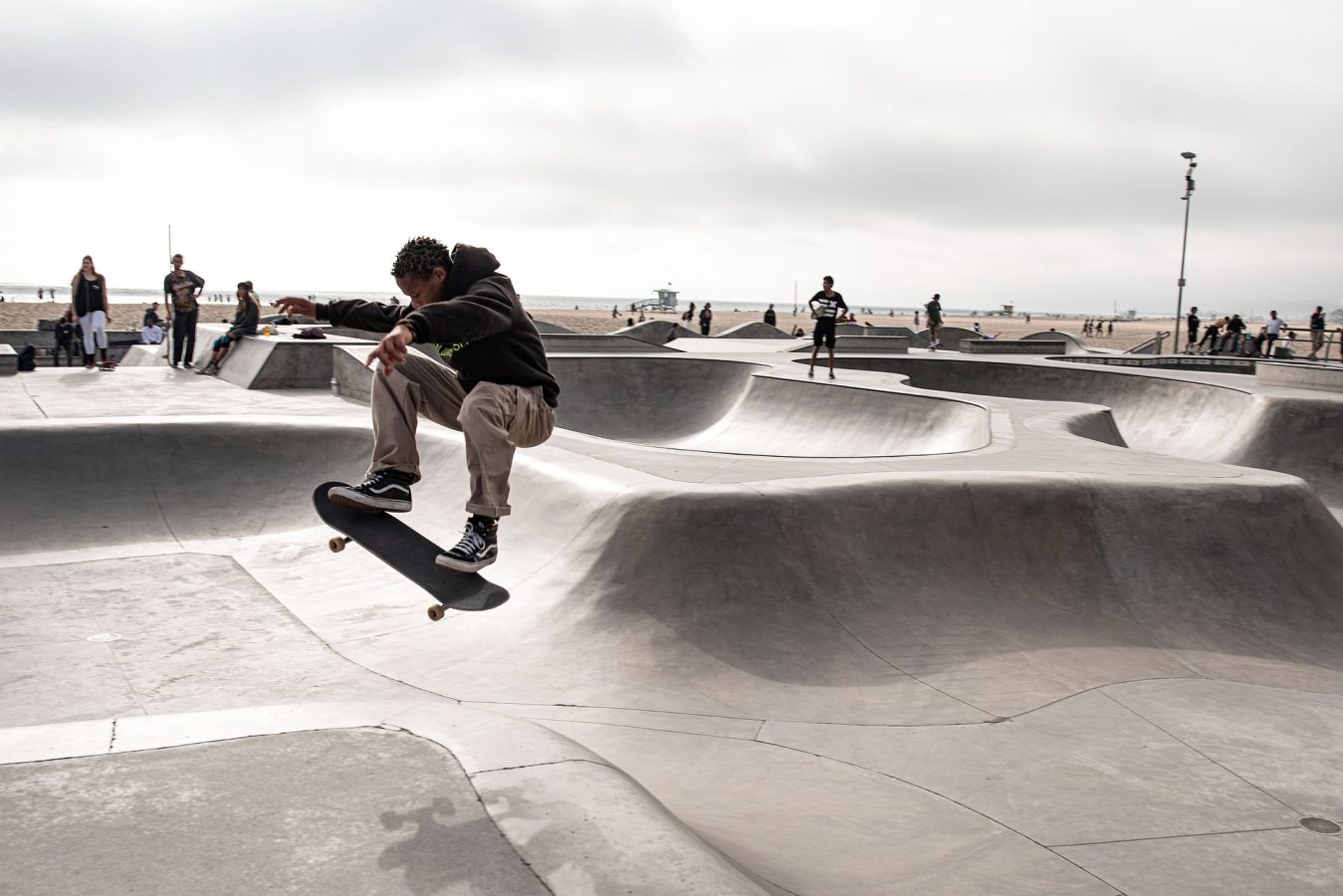


 Convert your video into 3D
Convert your video into 3D Facebook
Facebook Twitter
Twitter

